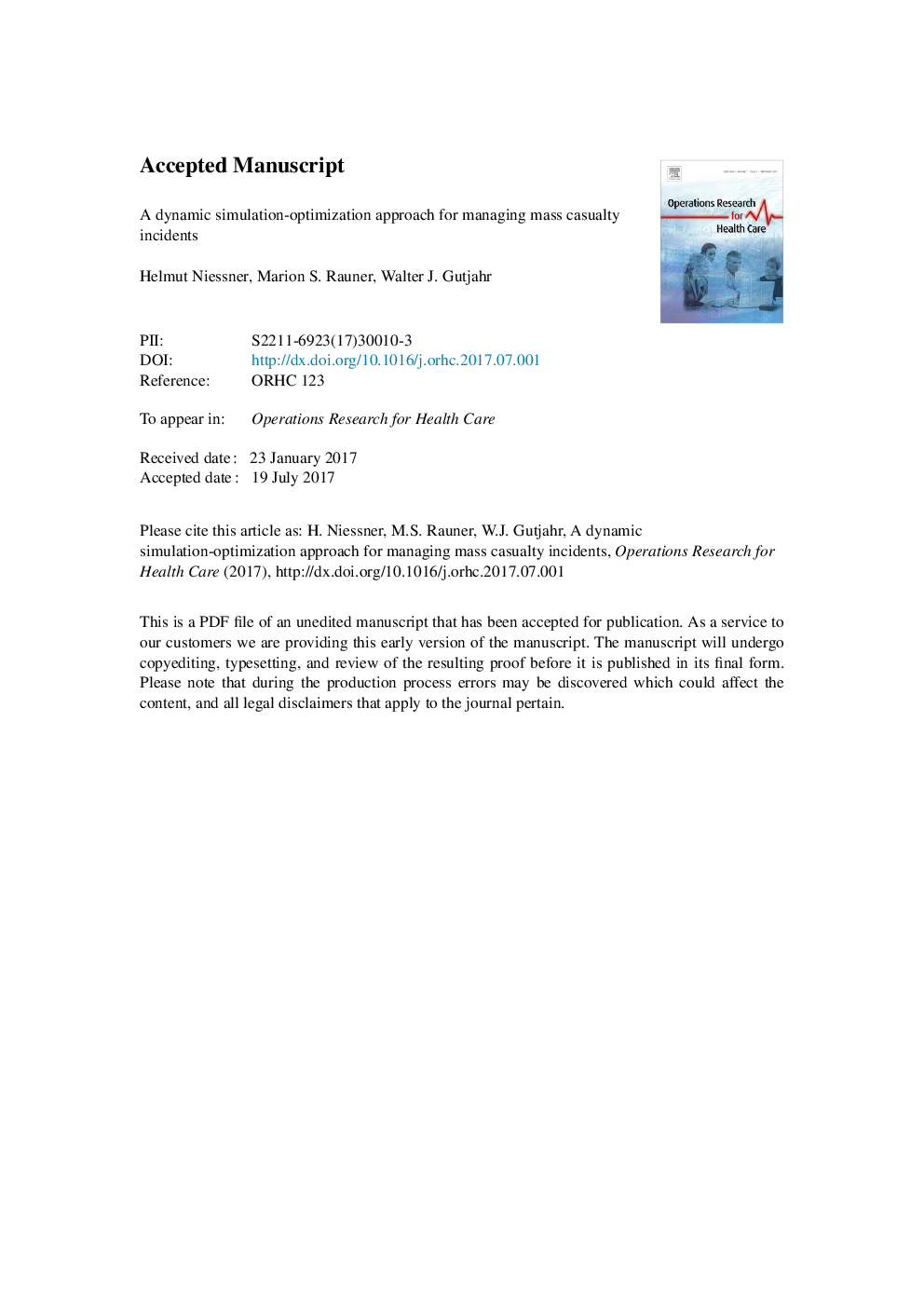ترجمه فارسی عنوان مقاله
یک روش شبیه سازی دینامیکی پویا برای مدیریت حوادث تلفات جمعی
عنوان انگلیسی
A dynamic simulationâoptimization approach for managing mass casualty incidents
| کد مقاله | سال انتشار | تعداد صفحات مقاله انگلیسی |
|---|---|---|
| 95779 | 2018 | 36 صفحه PDF |
منبع

Publisher : Elsevier - Science Direct (الزویر - ساینس دایرکت)
Journal : Operations Research for Health Care, Volume 17, June 2018, Pages 82-100
ترجمه کلمات کلیدی
بازی سیاست مدیریت، شبیه سازی بهینه سازی، سیستم پشتیبانی تصمیم، حوادث تلفات جمعی، خدمات اورژانس پزشکی،
کلمات کلیدی انگلیسی
Management policy game; Simulationâoptimization; Decision support system; Mass casualty incidents; Emergency medical services;

